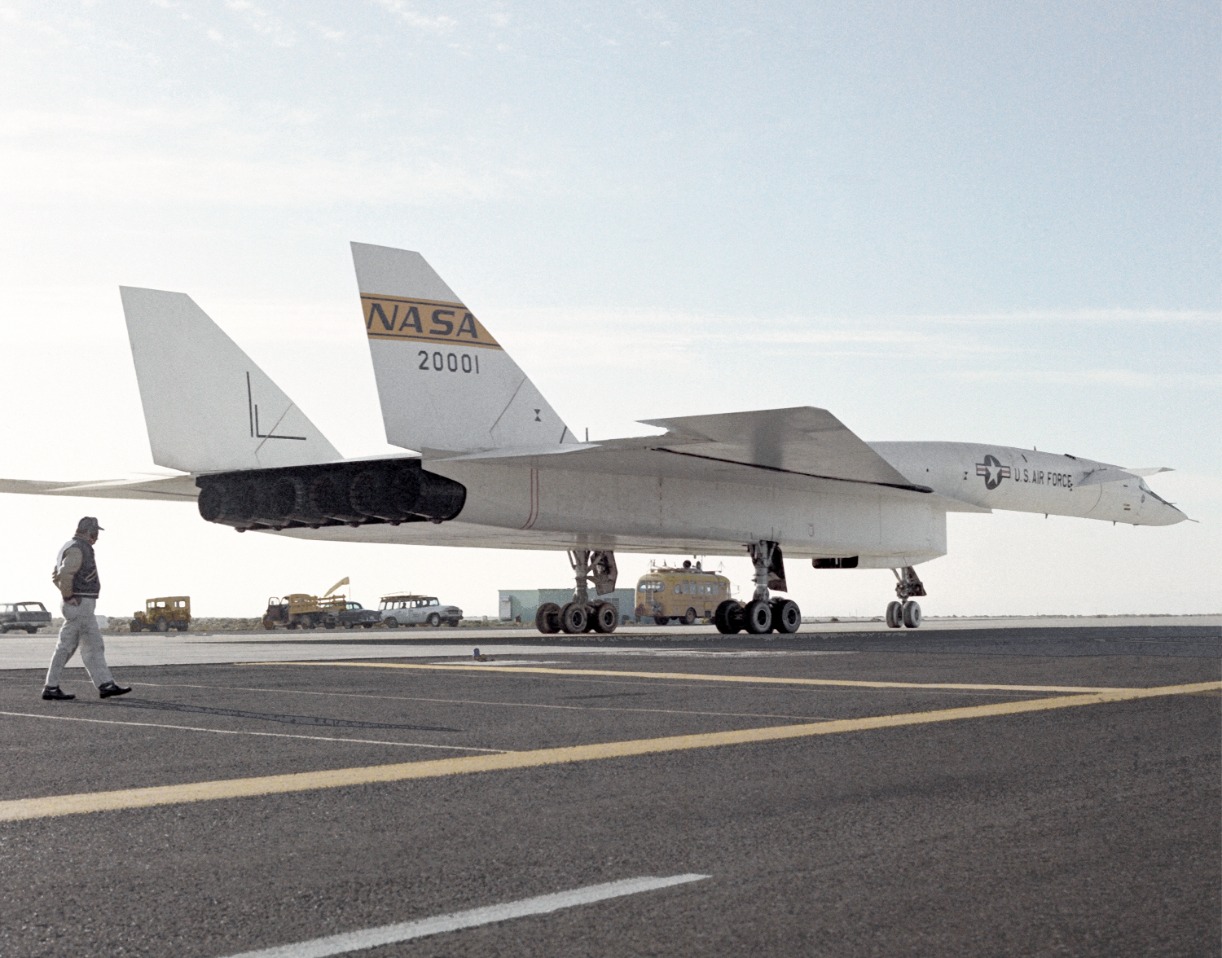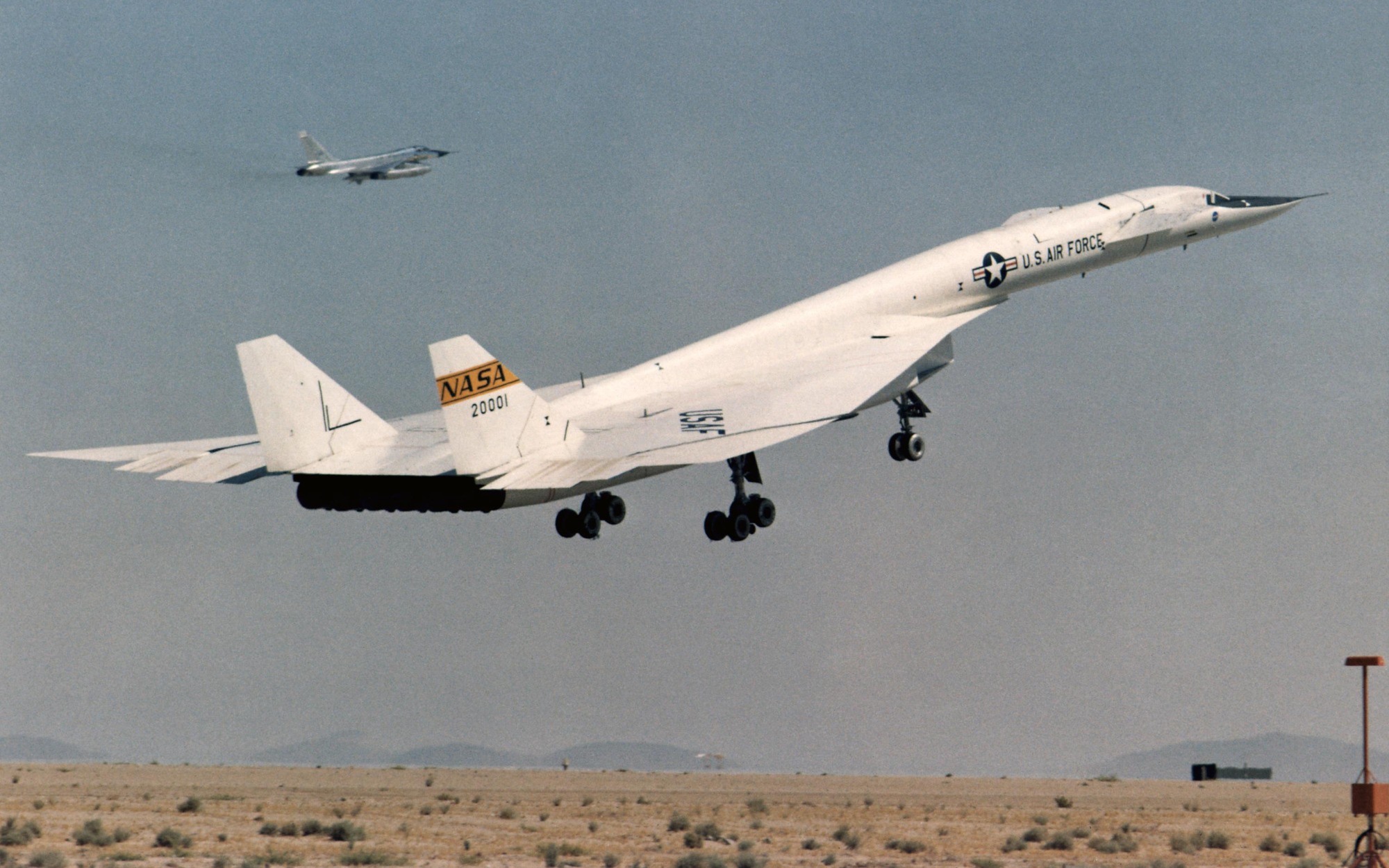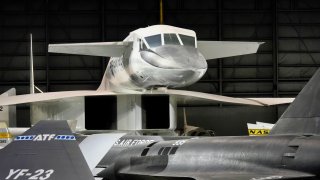XB-70 Valkyrie: The Rise and Fall of America’s Mach 3 Bomber
The North American XB-70 Valkyrie, conceived in the late 1950s, was an ambitious project to create the world's fastest and highest-flying bomber. With its futuristic design, six powerful afterburning engines, and advanced technology, the Valkyrie aimed to bypass Soviet defenses through sheer speed and altitude.
Secondary power for the Valkyrie’s onboard subsystems was touted as extremely lightweight and efficient and was described as able to provide “the equivalent horsepower of a modern V-8 engine in one-third the volume and two-thirds the weight.”
Despite the design’s dedication to high speeds, the outer-most portions of its wings, or outer wing panels, were actually hinged to allow for improved subsonic and supersonic flight. The panels would lie flat during take-off and low-speed flight, effectively extending the wing surface and improving the aircraft’s lift to drag ratio. Once the Valkyrie was flying at supersonic speeds, the wingtips would angle down to reduce the wing area behind the bomber’s center of gravity (reducing trim drag) and increase directional stability at high speeds.
Cabin pressurization was achieved by using the immense pressure of the air pouring into the intake during supersonic flight, with an engine-driven compressor assisting as needed to keep the interior feeling like a comfortable 8,000 feet above sea level. This pressurized cabin created what the Air Force referred to as a “tee-shirt” flight environment, which not only made long-duration flights more comfortable but also eliminated the need for special pressure suits like those worn by SR-71 and U-2 pilots. Skipping this time-consuming suit-up step would allow for faster scramble times in the event of a nuclear war.
The Valkyrie leveraged a bombing and navigation system developed by IBM that incorporated gyro-stabilized inertial navigation alongside automatic star-tracking to continuously provide up-to-date information about time and distance to target. A search-radar system with such high definition that its imaging was compared to “taking a photograph” was intended, and the aircraft’s defensive systems operator would be capable of jamming radar frequencies as well as operating conventional countermeasures like flares and chaff.

On paper, the XB-70 would provide the altitude and speed necessary to defeat Soviet defenses, the payload capacity to carry America’s most powerful weapons, and the fuel economy to fly more than 6,000 miles without a top-up. In the age of speed and altitude, the Valkyrie would rule the roost. But unfortunately for this envelope-pushing design, the world was changing quickly around it.
The XB-70 was a cutting-edge design that cut the wrong edges
In a lot of ways, the XB-70 promised to be the most advanced and capable bomber ever built, but it came at a time when the very future of bombers was in flux. In 1959, the SM-65 Atlas missile, America’s first operational Intercontinental Ballistic Missile (ICBM), entered service. That same year, testing began on the UGM-27 Polaris missile, America’s first submarine-launched ballistic missile (SLBM). These new weapon systems revolutionized America’s approach to delivering nuclear munitions to far-flung targets. No longer was it necessary to put bomber crews in harm’s way, nor did it seem as appropriate to invest heavily into new bomber designs at the dawn of what many thought would be “the missile age.”
On December 3, 1959—one day after taking office—newly appointed Secretary of Defense Thomas Gates cut the XB-70 program back to a single flyable prototype, bereft of any of the military-specific subsystems it would need to serve as a bomber… but even with the fangs removed from the Valkyrie, the program itself still had quite a bit of fight left in it. Despite this decision, the program was given injections of funds in 1960 and again in 1961.
In 1960, then-senators John F. Kennedy and Lyndon B. Johnson both made public statements in support of the program shortly before winning the year’s presidential election against sitting Vice President Richard Nixon and Henry Cabot Lodge Jr. Johnson even oversaw a 60-page argument in favor the XB-70 from the Preparedness Investigating Subcommittee, writing a full-page letter to open the report calling for it to be restored as a military weapon system. As a bit of historical humor, Johnson cites the B-52’s “obsolescence” as reason for continuing the program (the B-52 is now expected to remain in service beyond the 2040s).
But it wouldn’t be long before both politicians changed their tunes. Just a year later, in 1961, newly elected President Kennedy would give the XB-70 the final ax. The program limped on for eight more years as a technology demonstration effort that would field two prototype aircraft designated XB-70As. One prototype was destroyed after colliding with an F-104 Starfighter during a flying photoshoot in 1966, and the other would find a lasting home at the National Museum of the United States Air Force at Wright Patterson Air Force Base.
But even that still wasn’t the end for the XB-70 Valkyrie. The Air Force and North American would go on to pitch that platform for a wide variety of jobs, including launching and recovering spacecraft in flight, serving as a supersonic refueler, a supersonic personnel transport, and even an ICBM launch platform. None of these efforts, however, we enough to pull the expensive program back off the page and into real production.

Before long, bombers would once again come back into fashion, thanks initially to the fact that they can be recalled once launched, making them a good rapid-response option for early warnings of a potential nuclear threat. As time went on, the benefits of crewed bomber platforms coupled with the advent of stealth would place strategic bombers right back at the top of America’s nuclear strategy heap. But with stealth came a reduced focus on speed and altitude, relegating the XB-70 Valkyrie’s incredible new capabilities to the scrab bin for good.
Today, with hypersonic flight increasingly an area of focus for the United States and its near-peer competitors, it seems likely that we’ll see a resurgence of aircraft that are capable of flying at such blistering speeds. If so, we may yet see some of the lessons learned from the XB-70 program manifest in future bomber platforms. But the Valkyrie itself will always remain another what-if filed away neatly in the bowels of the Pentagon.
About the Author
Alex Hollings is a writer, dad, and Marine veteran who specializes in foreign policy and defense technology analysis. He holds a master’s degree in Communications from Southern New Hampshire University, as well as a bachelor’s degree in Corporate and Organizational Communications from Framingham State University. This first appeared in Sandboxx News.
All images are Creative Commons.


